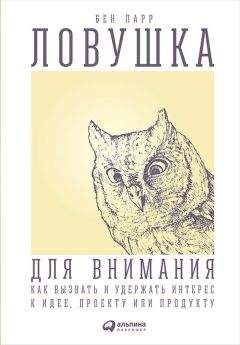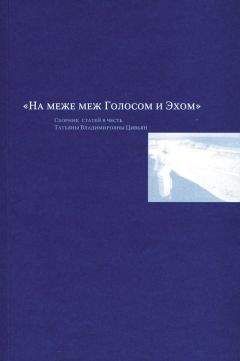Бен Парр - Ловушка для внимания: Как вызвать и удержать интерес к идее, проекту или продукту
Adam L. Alter, “Colors,” in Drunk Tank Pink: And Other Unexpected Forces that Shape How We Think, Feel, and Behave (New York: Penguin, 2013).
N. Yoshioka, “[Epidemiological Study of Suicide in Japan — Is It Possible to Reduce Committing Suicide?]” Nihon Hoigaku Zasshi 52, no. 5 (1998): 286–93; Keith W. Jacobs and James F. Suess, “Effects of Four Psychological Primary Colors on Anxiety State,” Perceptual and Motor Skills 41, no. 1 (1975): 207–10; Robert E. Strong et al., “Narrow-Band Blue-Light Treatment of Seasonal Affective Disorder in Adults and the Influence of Additional Nonseasonal Symptoms,” Depression and Anxiety 26, no. 3 (2009): 273–78.
Cliff Kuang, “Infographic of the Day: What Colors Mean Across 10 Cultures,” Fast Company, April 26, 2010, http://www.fastcompany.com/1627581/infographic-day-what-colors-mean-across-10-cultures.
Patricia Valdez and Albert Mehrabian, “Effects of Color on Emotions,” Journal of Experimental Psychology: General 123, no. 4 (1994): 394–409.
Anton J. M. de Craen et al., “Effect of Colour of Drugs: Systematic Review of Perceived Effect of Drugs and of Their Effectiveness,” British Medical Journal 313, no. 7072 (1996): 1624–26.
Lauren I. Labrecque and George R. Milne, “Exciting Red and Competent Blue: The Importance of Color in Marketing,” Journal of the Academy of Marketing Science 40, no. 5 (2011): 711–27.
Mark Wilson, “Why the Security Bug Heartbleed Has a Catchy Logo,” Fast Company, April 11, 2014, http://www.fastcodesign.com/3028982/why-the-security-bug-heartbleed-has-a-catchy-logo.
Gráinne M. Fitzsimons, Tanya L. Chartrand, and Gavan J. Fitzsimons, “Automatic Effects of Brand Exposure on Motivated Behavior: How Apple Makes You ‘Think Different,’ ” Journal of Consumer Research 35, no. 1 (2008): 21–35.
Daniel Kahneman, “The Associative Machine,” in Thinking, Fast and Slow (New York: Farrar, Straus and Giroux, 2011), 50–58.
Bill Prady, Steven Molaro, and Jim Reynolds, “The Cohabitation Formulation,” The Big Bang Theory, season 4, episode 16, directed by Mark Cendrowski, aired February 17, 2011 (New York: CBS).
Lawrence E. Williams and John A. Bargh, “Experiencing Physical Warmth Promotes Interpersonal Warmth,” Science 322, no. 5901 (2008): 606–7.
Simon Storey and Lance Workman, “The Effects of Temperature Priming on Cooperation in the Iterated Prisoner’s Dilemma,” Evolutionary Psychology 11, no. 1 (2013): 52–67.
Chris Eccleston and Geert Crombez, “Pain Demands Attention: A Cognitive-Affective Model of the Interruptive Function of Pain,” Psychological Bulletin 125, no. 3 (1999): 356–66.
Judee K. Burgoon, “Relational Message Interpretations of Touch, Conversational Distance, and Posture,” Journal of Nonverbal Behavior 15, no. 4 (1991): 233–59; Glen P. Williams and Chris L. Kleinke, “Effects of Mutual Gaze and Touch on Attraction, Mood, and Cardiovascular Reactivity,” Journal of Research in Personality 27, no. 2 (1993): 170–83.
Kate McCulley, “How I Survived a Mugging,” Adventurous Kate’s Solo Female Travel Blog, October 12, 2010, http://www.adventurouskate.com/how-i-survived-a-mugging/.
Carles Escera et al., “Neural Mechanisms of Involuntary Attention to Acoustic Novelty and Change,” Journal of Cognitive Neuroscience 10, no. 5 (1998): 590–604; Fabrice B. R. Parmentier, “Towards a Cognitive Model of Distraction by Auditory Novelty: The Role of Involuntary Attention Capture and Semantic Processing,” Cognition 109, no. 3 (2008): 345–62; Dennis P. Carmody and Michael Lewis, “Brain Activation when Hearing One’s Own and Others’ Names,” Brain Research 1116, no. 1 (2006): 153–58.
Майкл Познер, интервью с автором по телефону, 3 июля 2013 г.
E. Colin Cherry, “Some Experiments on the Recognition of Speech, with One and with Two Ears,” Journal of the Acoustical Society of America 25, no. 5 (1953): 975–79.
Anne M. Treisman, “The Effect of Irrelevant Material on the Efficiency of Selective Listening,” American Journal of Psychology 77, no. 4 (1964): 533–46.
Noelle Wood and Nelson Cowan, “The Cocktail Party Phenomenon Revisited: How Frequent Are Attention Shifts to One’s Name in an Irrelevant Auditory Channel?” Journal of Experimental Psychology: Learning, Memory, and Cognition 21, no. 1 (1995): 255–60.
Megan Garber, “Ghost Army: The Inflatable Tanks that Fooled Hitler,” The Atlantic, May 22, 2013, http://www.theatlantic.com/technology/archive/
2013/05/ghost-army-the-inflatable-tanks-that-fooled-hitler/276137/; The Ghost Army, directed by Peter Coyote (Arlington, VA: PBS Distribution, 2013), DVD.
Глава 3. Фрейминг
Sarah Everts, “How Advertisers Convinced Americans They Smelled Bad,” Smithsonian.com, August 2, 2012, http://www.smithsonianmag.com/
history-archaeology/How-Advertisers-Convinced-Americans-They-Smelled-Bad-164779646.html.
Дитрам Шефель, интервью с автором по телефону, 5 февраля 2014 г.
Elizabeth F. Loftus and John C. Palmer, “Reconstruction of Automobile Destruction: An Example of the Interaction Between Language and Memory,” Journal of Verbal Learning and Verbal Behavior 13, no. 5 (1974): 585–89.
Marianne Bertrand and Sendhil Mullainathan, “Are Emily and Brendan More Employable than Lakisha and Jamal? A Field Experiment on Labor Market Discrimination” (working paper, Univ. of Chicago, Graduate School of Business, 2002).
Will Wei, “How Pandora Survived More than 300 VC Rejections,” Business Insider, July 14, 2010, http://www.businessinsider.com/pandora-vc-2010–7.
Robert Strohmeyer, “The 7 Worst Tech Predictions of All Time,” TechHive, December 31, 2008, http://www.techhive.com/article/155984/worst_tech_predictions.html.
Gene Weingarten, “Pearls Before Breakfast,” The Washington Post, April 8, 2007.
Nina Verdelli, “The Violin and the Street,” Citizen Brooklyn, n. d., http://www.citizenbrooklyn.com/topics/fashion/the-violin-and-the-street/.
Сьюзан Кезер, интервью с автором по телефону, 26 мюля 2013 г.
Alhan Keser, “Why Joshua Bell Failed in the Subway,” Alhan Keser blog, November 22, 2012, http://web.archive.org/web/20130806230315/
http://alhan.co/why-joshua-bell-failed-in-subway/.
Press Association, “Rush Hour Traffic Tops Poll of Everyday Stresses,” The Guardian, October 31, 2000, http://www.theguardian.com/uk/2000/nov/01/transport.world.
Кезер, интервью с автором.
Adam Wooten, “International Business: Wrong Flowers Can Mean Death for Global Business,” Deseret News, February 4, 2011, http://www.deseretnews.com/article/705365824/Wrong-flowers-can-mean-death-for-global-business.html.
Frank Luntz, Words that Work: It’s Not What You Say, It’s What People Hear (New York: Hyperion, 2007).
Tommy Christopher, “How Fox News, CNN, and MSNBC Covered Chris Christie ‘Bridgegate’ on Wednesday,” Mediaite, January 9, 2014, http://www.mediaite.com/tv/how-fox-news-cnn-and-msnbc-covered-chris-christie-bridgegate-on-wednesday/.
Lynn Hasher, David Goldstein, and Thomas Toppino, “Frequency and the Conference of Referential Validity,” Journal of Verbal Learning and Verbal Behavior 16, no. 1 (1977): 107–12.
Номера 1 и 4 неверны: команда Тулейнского университета победила команду Темпльского университета в первой игре чемпионата Sugar Bowl (20:14). За пределами Нью-Йорка и Чикаго самым высоким зданием является здание Bank of America Plaza в Атланте.
Wesley G. Moons, Diane M. Mackie, and Teresa Garcia-Marques, “The Impact of Repetition-Induced Familiarity on Agreement with Weak and Strong Arguments,” Journal of Personality and Social Psychology 96, no. 1 (2009): 32–44.
Rachel Feintzeig, Mike Spector, and Julie Jargon, “Twinkie Maker Hostess to Close,” The Wall Street Journal, November 16, 2012, http://online.wsj.com/news/articles/
SB10001424127887324556304578122632560842670.
Michael Lynn, “Scarcity Effects on Value: A Quantitative Review of the Commodity Theory Literature,” Psychology & Marketing 8, no. 1 (1991): 43–57.
Theo M. M. Verhallen and Henry S. J. Robben, “Scarcity and Preference: An Experiment on Unavailability and Product Evaluation,” Journal of Economic Psychology 15, no. 2 (1994): 315–31.
Associated Press, “Hostess: Twinkies Demand at Record High,” The Huffington Post, July 18, 2013, http://www.huffingtonpost.com/2013/07/18/
hostess-twinkies-demand_n_3615900.html.
Stephen Worchel, Jerry Lee, and Akanbi Adewole, “Effects of Supply and Demand on Ratings of Object Value,” Journal of Personality and Social Psychology 32, no. 5 (1975): 906–14.
Джош Элман, интервью с автором, Халф-Мун-Бей, Калифорния, 17 июня 2013 г.
Глава 4. Разрушение стереотипов
Nicholas Carlson, “This Post Has All the Black Friday Stats You Need to Sound Smart in Meetings,” Business Insider, December 13, 2013, http://www.businessinsider.com/2013-black-friday-stats-2013–12.
Jeff Rosenblum, “How Patagonia Makes More Money by Trying to Make Less,” Fast Company, December 6, 2012, http://www.fastcoexist.com/1681023/
how-patagonia-makes-more-money-by-trying-to-make-less; Kyle Stock, “Patagonia’s Confusing and Effective Campaign to Grudgingly Sell Stuff,” Bloomberg Business Week, November 25, 2013, http://www.businessweek.com/articles/2013–11–25/
patagonias-confusing-and-effective-campaign-to-grudgingly-sell-stuff; Kyle Stock, “Patagonia’s ‘Buy Less’ Plea Spurs More Buying,” Bloomberg Business Week, August 28, 2013, http://www.businessweek.com/articles/
2013–08–28/patagonias-buy-less-plea-spurs-more-buying.
Marilyn Boltz, Matthew Schulkind, and Suzanne Kantra, “Effects of Background Music on the Remembering of Filmed Events,” Memory & Cognition 19, no. 6 (1991): 593–606.
Judee K. Burgoon and Jerold L. Hale, “Nonverbal Expectancy Violations: Model Elaboration and Application to Immediacy Behaviors,” Communications Monographs 55, no. 1 (1988): 58–79.
Scott Goldthorp, “The 2012 Rosenthal Prize for Innovation in Math Teaching: Hands-On Data Analysis,” MoMath, 2012, http://momath.org/wp-content/uploads/
RosenthalPrize2012_Winning_Lesson_Plan.pdf; Evelyn Lamb, “Award-Winning Teachers Put Math on Hands and Heads,” Roots of Unity blog, Scientific American, May 3, 2013, http://blogs.scientificamerican.com/roots-of-unity/
2013/05/03/math-on-hands-and-heads-rosenthal-prize/.
Mark A. McDaniel et al., “The Bizarreness Effect: It’s Not Surprising, It’s Complex,” Journal of Experimental Psychology: Learning, Memory, and Cognition 21, no. 2 (1995): 422–35.
Igor Bobic, “Todd Akin Just Can’t Stop Talking About Rape,” The Huffington Post, July 17, 2014, http://www.huffingtonpost.com/2014/07/17/todd-akin-rape_n_5595270.html.
Tony Thwaites, Lloyd Davis, and Warwick Mules, “Advertisement,” in Introducing Cultural and Media Studies: A Semiotic Approach (Houndmills, Basingstoke, Hampshire: Palgrave, 2002), 50–52.
Farhad Manjoo, “Invincible Apple: 10 Lessons from the Coolest Company Anywhere,” Fast Company, July 1, 2010, http://www.fastcompany.com/1659056/
invincible-apple-10-lessons-coolest-company-anywhere.
Jürgen Huber, Michael Kirchler, and Matthias Sutter, “Is More Information Always Better?: Experimental Financial Markets with Cumulative Information,” Journal of Economic Behavior & Organization 65, no. 1 (2008): 86–104.
Джон Суэллер, интервью с автором по Skype, 29 мая 2013 г.
Суэллер, интервью с автором.
Иеремия Оуянг, интервью с автором по телефону, 14 мая 2013 г.
Рейчел Лайтфут Мелби, интервью с автором, Сан-Бруно, Калифорния, 12 апреля 2013 г.
Barb Dybwad, “When Videos Buffer, Viewers Leave… in Droves [STATS],” December 11, 2009, Mashable, http://mashable.com/2009/12/11/online-video-buffering/.
Lisa Belkin, “Moms and Motrin,” Motherlode blog, New York Times, November 17, 2008, http://parenting.blogs.nytimes.com/2008/11/17/moms-and-motrin/.
Seth Stevenson, “The Creatures from the Sandwich Shop,” Slate, February 23, 2004, http://www.slate.com/articles/business/ad_report_card/
2004/02/the_creatures_from_the_sandwich_shop.html.
Jane Levere, “A Guy’s Guy Tired of Plain Old Soap? Old Spice Is Counting on It,” New York Times, August 1, 2003, http://www.nytimes.com/2003/08/01/business/


